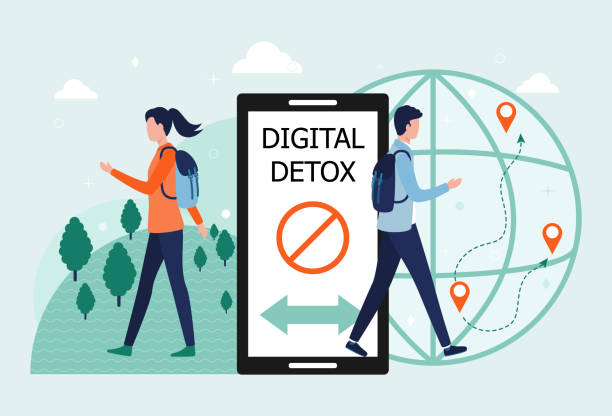Benefits of Journaling: Write for Clarity & Growth
The Power of Journaling : Writing Your Way to Clarity
Introduction: Why Writing Still Matters
In an age of smartphones, social media, and endless notifications, sitting down with a pen and paper may seem old-fashioned. Yet, journaling has quietly stood the test of time as one of the most powerful habits for personal growth. From great thinkers like Leonardo da Vinci to modern leaders and creators, countless people have used journaling to reflect, process emotions, and spark creativity.
But journaling is more than just “keeping a diary.” It’s about creating a safe space where you can untangle your thoughts, understand yourself better, and bring order to the chaos of daily life. The best part? It requires no fancy tools—just honesty, consistency, and a willingness to put words on paper.
In this article, we’ll explore the benefits of journaling, the different styles you can try, and simple steps to make it a transformative part of your daily routine.
1. Journaling Helps Clear Mental Clutter
Every day, we absorb hundreds of thoughts, worries, and distractions. Journaling acts like a mental filter, helping you pour those overwhelming thoughts onto paper so your mind feels lighter.
When you write down your worries or to-do lists, you no longer need to carry them all in your head. This process of “externalizing” helps you see things clearly. Instead of being lost in endless cycles of overthinking, you now have clarity.
Think of it like spring-cleaning your brain. Once the clutter is out, you create room for calm, creativity, and focus.
2. Journaling Reduces Stress and Anxiety
Studies have shown that expressive writing—where you write about your feelings and struggles—helps reduce stress and even lowers physical symptoms like headaches or tension. When you express emotions on paper, you acknowledge them instead of suppressing them.
For example, if you’re upset about a conflict at work or home, writing about it can help you process emotions without immediately reacting in anger. Journaling acts as a pressure release valve, giving your mind and body a chance to relax.
Over time, this practice builds emotional resilience, helping you bounce back from stress faster.
3. Journaling Improves Focus and Productivity
One of the simplest forms of journaling is the daily to-do list or morning planning page. Writing down your top priorities keeps you organized and focused.
Instead of starting your day in a rush, journaling allows you to set intentions and decide what truly matters. This creates structure and direction, reducing that scattered feeling of “too much to do, not enough time.”
Many successful entrepreneurs and leaders swear by journaling as a productivity hack because it trains the mind to stay disciplined and intentional.
4. Journaling Boosts Creativity
Some of the greatest works of art, literature, and inventions began as simple scribbles in journals. Writing freely without judgment taps into your subconscious mind, which is where creativity thrives.
The practice known as “morning pages” (popularized by Julia Cameron in The Artist’s Way) encourages people to write three pages every morning without editing. This free-flowing writing helps break mental blocks, uncover new ideas, and spark creative thinking.
If you’re a writer, artist, or simply someone who wants to think outside the box, journaling can be your secret weapon for inspiration.
5. Journaling Improves Self-Awareness
One of the most transformative aspects of journaling is how it deepens your understanding of yourself. By writing about your feelings, experiences, and decisions, you start to notice patterns.
For example:
-
Do certain situations always trigger stress?
-
Do you feel most energized after specific activities?
-
Are your goals aligned with your daily habits?
By reflecting on these insights, you gain self-awareness, which is the first step toward personal growth. Journaling acts as a mirror that helps you see who you are and who you want to become.
6. Journaling Supports Mental and Emotional Healing
Therapists often recommend journaling as a tool for emotional healing. Writing about past traumas or painful memories in a safe space allows you to process them gradually.
Of course, journaling doesn’t replace professional help when needed, but it complements therapy by giving you an outlet between sessions.
Even simple gratitude journaling—writing three things you’re thankful for each day—can shift your mindset toward positivity, reducing feelings of sadness or loneliness.
7. Different Styles of Journaling to Try
The beauty of journaling is that there’s no single “right way” to do it. You can experiment and choose what works best for you. Here are some popular styles:
-
Gratitude Journal: Write down things you’re grateful for daily.
-
Bullet Journal: Combines planning, goal-tracking, and reflection in one place.
-
Stream of Consciousness: Write without stopping or censoring your thoughts.
-
Prompt-Based Journaling: Use questions like “What made me happy today?” to guide reflection.
-
Goal-Oriented Journaling: Focus on progress toward personal or professional goals.
You can even mix and match styles depending on your mood or needs.
8. How to Start Journaling (Even If You’ve Never Done It)
Many people hesitate to start journaling because they think it has to be perfect. The truth? Your journal is for you—no one else.
Here are some tips to make it easy:
-
Pick a medium: Notebook, digital app, or even voice notes (later transcribed).
-
Start small: Write for 5 minutes a day—consistency matters more than length.
-
Don’t overthink: Grammar, spelling, or handwriting don’t matter. Just write.
-
Use prompts if stuck: Example: “What am I feeling right now?”
-
Make it a ritual: Try journaling in the morning or before bed to build a habit.
9. Common Myths About Journaling
-
“I don’t have time.” → Even 5 minutes daily makes a difference.
-
“I’m not a good writer.” → Journaling isn’t about skill—it’s about honesty.
-
“It won’t help me.” → Countless studies show its benefits for stress, mood, and clarity.
The only real mistake is never giving it a try.
Conclusion: Your Pen, Your Power : You Wanna Know
Journaling is more than just words on a page—it’s a conversation with yourself. It helps you process emotions, organize thoughts, and gain clarity in a noisy world. Whether you’re looking to reduce stress, unlock creativity, or simply understand yourself better, journaling can be life-changing.
The best part? You don’t need special tools, long hours, or professional skills. Just a pen, paper, and the willingness to be honest with yourself.
So tonight, instead of scrolling endlessly on your phone, grab a notebook. Write a few lines. Let your thoughts flow. Over time, you’ll discover the quiet but powerful truth: journaling doesn’t just help you live better—it helps you understand yourself on a deeper level.


